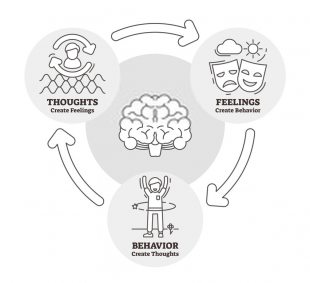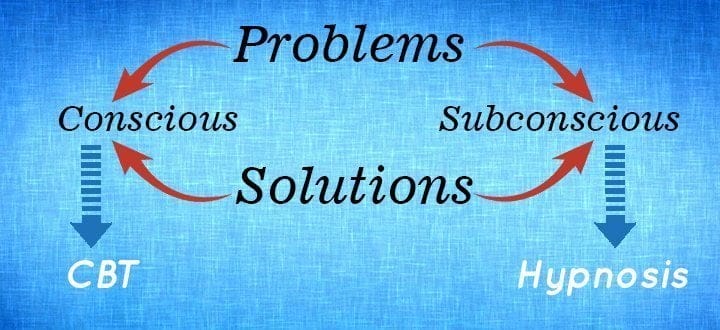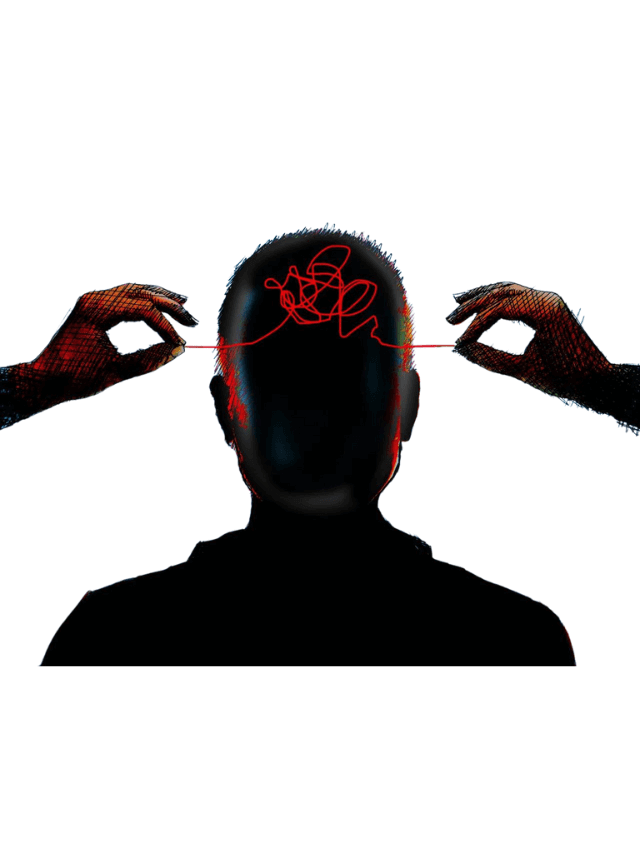At first glance, Hypnosis and Cognitive Behavioural Therapy seem like distinct therapeutic approaches, each with its own strengths and limitations. However, what if we could combine the two to create Cognitive Hypnotherapy?
But is it even possible to integrate the two?

Since problems that people face are a result of their thoughts and behaviours which could be conscious as well as the subconscious, resolution of problems require a shift at both the conscious and the subconscious levels. There are different approaches to therapies that focus on these levels separately.
One of the most popular approaches to deal with conscious thoughts and behaviours is CBT. And the approach that deals with unconscious thoughts and automatic behaviours is Hypnotherapy.
What is CBT?
Beginning with CBT first, CBT stands for Cognitive Behavioural Therapy. It is a systematic approach to Psychotherapy, which is growing in popularity as an effective psycho-therapeutic method to help people deal with various kinds of emotional and psychological issues.
Its effectiveness as a mode of therapy has been more extensively researched than any other approach to psychotherapy. Its treatment sessions are brief and highly structured.
Where is CBT effective?

CBT can help people overcome and deal with a wide range of issues. Some of these problems include:
- Anxiety
- Panic disorders
- Addictions
- Eating disorders
- Obsessive Compulsive Disorders
- Fears and Phobias
- Post-traumatic Stress Disorders
- Social Phobia
- Depression
- Personality disorders
- Chronic aches and pains, etc.
What are the limitations of CBT?
CBT focuses on changing the cognitive thought process & behaviours of an individual. It isn’t rocket science and most of the steps are relatively simple. In fact, many of the principles and suggestions may seem like common sense.
- Requires persistence, focus and hard work
The problem with CBT is that the actual application of the principles & suggestions is far from easy. Using CBT to help yourself requires a lot of personal efforts, diligence, repetition and determination. It is a lot like developing a new skill or a habit. It requires persistence, focus and hard work. - Unconscious thought processes
Another limitation of CBT is that there are times when the thought processes that need to be challenged or disputed may be unconscious; that is, the individual may not be aware of his/her unhealthy cognitions (an example of this can be phobias, anxiety, OCD). So in such instances, identifying the negative beliefs and attempting to change them through challenging and disputation can become a tedious and long-drawn procedure which can lead to some of the clients giving up on therapy after a certain point in time. - Awareness is not equal to change
Also, even if the client is aware of the thought processes, awareness does not necessarily lead to change. For example:- I may be aware of the fact that I have a phobia of cockroaches, and I may even admit that my phobia is irrational and ridiculous, yet every time I look at a cockroach I still jump!
- The same could be true for smoking and other addictions. I might be aware that smoking is destroying my health, yet I may be unable to quit. And even if I do quit, the chances of relapse or substitution can be very high because there might be an unconscious positive intention associated with the addiction.
- So, in such cases, simply disputing or challenging the idea might not work. One can use exposure therapy in case of phobias but it may require a lot of time.
So is there a way to overcome these limitations?
This is where the usefulness of Hypnosis comes into play.
What is Hypnosis?

Hypnosis is a state of hyper-suggestibility. In simple words, Hypnosis is a state in which a person is open to receiving suggestions and are naturally able to respond to these suggestions effectively.
Thus Hypnosis can be very useful in helping people become aware of their thought processes (because they could be suggested to do so) and to also to create the desired changes (which can also be suggested). When applied in therapy, hypnosis is a very effective tool to bring about profound and lasting changes.
What are the benefits of integrating Hypnosis with CBT to create Cognitive Hypnotherapy?

Just like CBT is more effective than medication alone, when Hypnosis is added to the mix, it becomes more effective than CBT alone.
Researches have shown that for between 70-90% of clients, cognitive and behavioural therapies were more effective when integrated with hypnosis, i.e., that for the vast majority of clients cognitive-behavioural hypnotherapy is superior to CBT alone.*
How does Cognitive Hypnotherapy work?
CBT focuses on giving the client a new range of skills consciously. But at a lot of times even though people have the skills, they find it difficult to apply the same. Most people face an internal conflict between what they have decided to do (consciously develop & apply skills) & their automatic behaviour or existing habits (subconscious). This makes the application of these skills very tiring. A good example of this conflict is waking up early to exercise (decision) and the desire to continue to sleep (automatic response when the alarm rings). The result of this conflict in most cases is a snooze. ????
Since hypnosis deals with the subconscious, it can effectively help resolve this conflict. Hypnosis also helps by acting as a vehicle to integrate these skills with the subconscious thereby making the application of skills more natural and effective. Experimentation and rehearsal of applying these new skills can be carried out in the subconscious during hypnosis.
Hypnosis can also help enhance the homework and experimental aspects crucial in CBT as these can be seeded & reinforced in the subconscious.
In the case of automatic thoughts patterns, Hypnosis can be used to pause or slow down the thoughts playing inside the mind (through suggestions), so that we can become aware of them.
Having identified the client’s unhelpful thinking patterns, Hypnosis can further help by adding a dimension of flexibility in perception and behaviour which can help the client rethink about things in a much healthier manner.
Hypnosis can also help by creating a degree of detachment from thoughts and feelings which allows the client to observe these thoughts and feelings as an outsider (3rd person). This helps the client see that we are not our thoughts and feelings which makes it easy to challenge these thoughts, feelings and other unhelpful beliefs.
Instead of trying to make new associations at the conscious level which generally requires a lot of efforts and repetition before they can become automatic i.e. subconscious, hypnosis can be used to create associations directly at the level of the subconscious.
Since the subconscious also drives the autonomic nervous system which is responsible for all our involuntary body actions i.e.: breathing, heart rate, lymph functions, growth, repair and replacement of dead and dying cells etc, hypnosis can add great value in addressing physical trauma issues and improving physical health and well-being generally.
In short, Cognitive Hypnotherapy can be very useful in:
- Making the therapies briefer and even more effective.
- Identifying problems and deeply-held beliefs more easily.
- Helping with catharsis, i.e., releasing intense negative emotions can become easier and faster with the help of hypnosis.
- Challenging or disputing existing cognitions of the client with the least resistance.
- Identifying and observing automatic and unconscious thought patterns
- Creating change in automatic behaviours and emotional states far more effortlessly.
- Dealing with traumatic repressed memories.
- Establishing rapport and trust between the Therapist and Client.
Though both these modalities are useful, often therapists who have been trained in both approaches separately, tend to find conscious and unconscious processes contradictory. Therefore, it becomes difficult for them to incorporate it into their practice. Hence there is a need to learn both these approaches in an integrated manner.
It is in order to fulfil this need that the course on Cognitive Hypnotic Psychotherapy™ (CHP) has been created.
*Reference
Schoenberger, N. E., Kirsch, I., Gearan, P., Montgomery, G., & Pastyrnak, S. L. (1997). Hypnotic Enhancement of a Cognitive Behavioural Treatment for Public Speaking Anxiety. Behaviour Therapy (28), 127-140.


